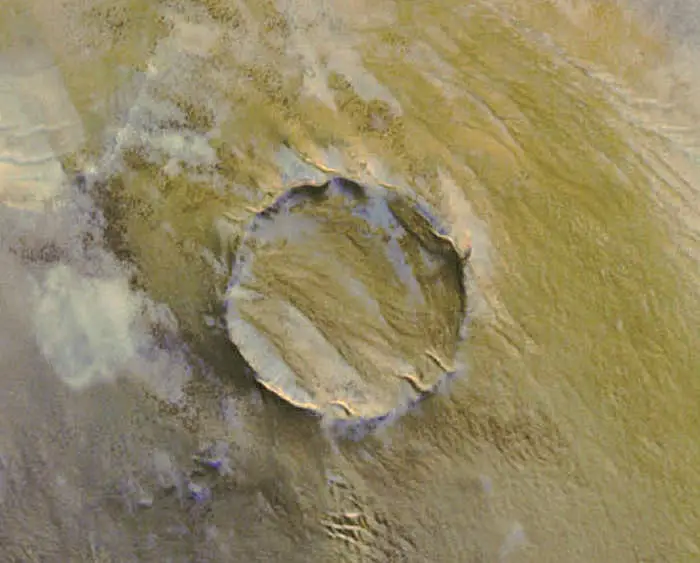Wondermondo 🢖 World 🢖 Wonders of Africa 🢖 Wonders of Namibia
Territory
Wonders of Namibia
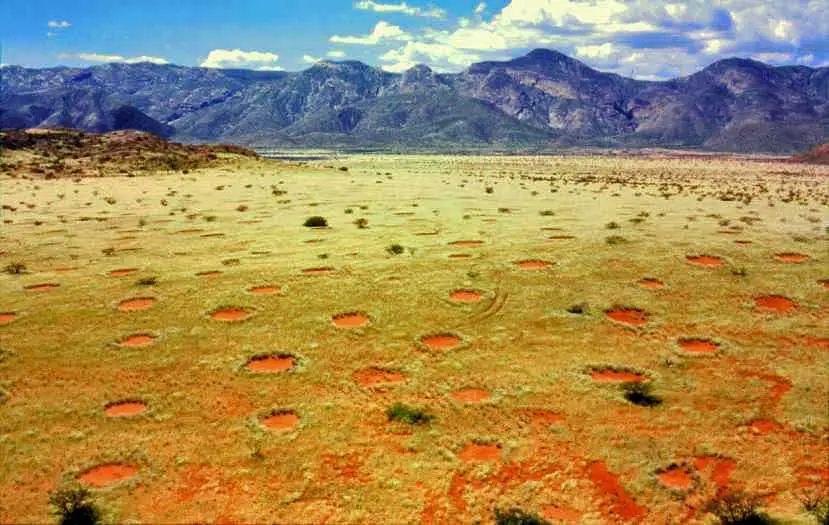
 Highlights
Highlights
Few countries in the world have such visually stunning landmarks as Namibia – it is no wonder that the landscape of Namibia has been used to depict life on other planets.
The most amazing wonders of Namibia are:
- Ecosystems. There is the eerie Succulent Karoo Ecosystem with thousands of life forms not met anywhere else in the world. Such plants as Welwitschia mirabilis or Aloe dichotoma create unusual sight that resembles life on another planet.
- Cliff formations, canyons. Some of the most impressing formations there are Fish River Canyon and the 700 m tall Spitzkoppe.
There are several unique landmarks without analogs – such as the largest piece of natural iron in the world (Hoba meteorite), the largest underground lake, 50 m long crystals and some others.
Map with the described wonders
If you see this after your page is loaded completely, leafletJS files are missing.
 Top 25 wonders of Namibia
Top 25 wonders of Namibia
Geological wonders
Fish River Canyon
Karas
The second largest canyon in the world after the Grand Canyon (United States). This giant canyon is some 160 km long, up to 27 km wide, up to 550 m deep.
Dragon’s Breath Cave
Otjozondjupa
Unique cave with the largest cave lake in the world (except for subglacial lakes). This lake is located some 100 m below the surface, the area of this lake is some 2 ha and it most likely is very deep. Endemic species.
Spitzkoppe
Erongo
Granite peak – monolith, rising some 700 m above the surrounding plains. Nearby are located some more granite monoliths. Rock art.
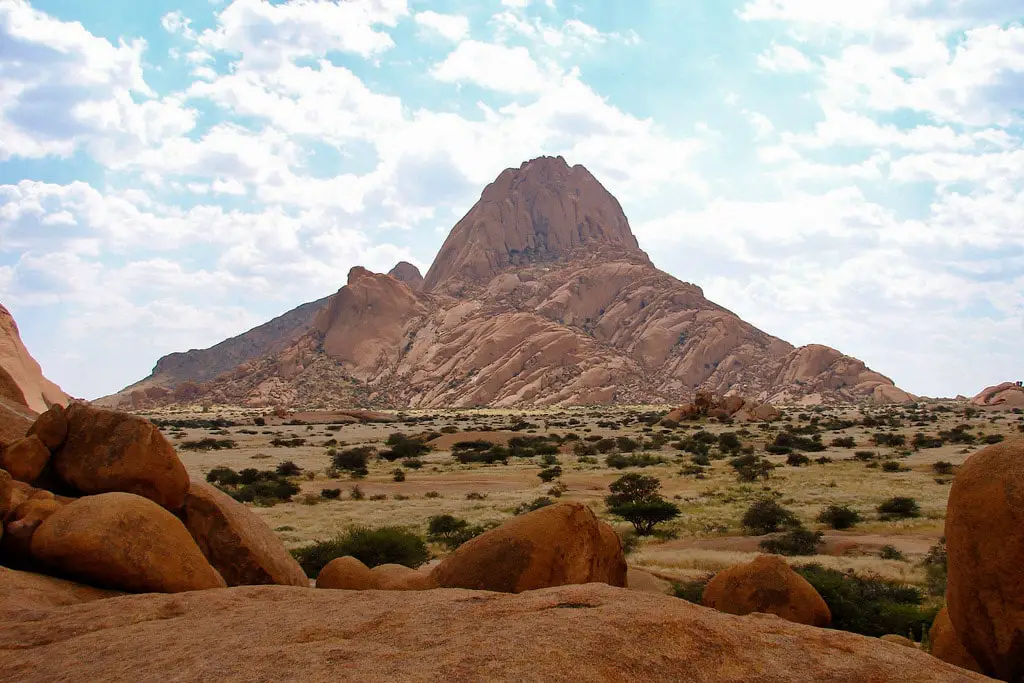
Dune 7
Erongo
Very tall sand dunes, 383 m high.
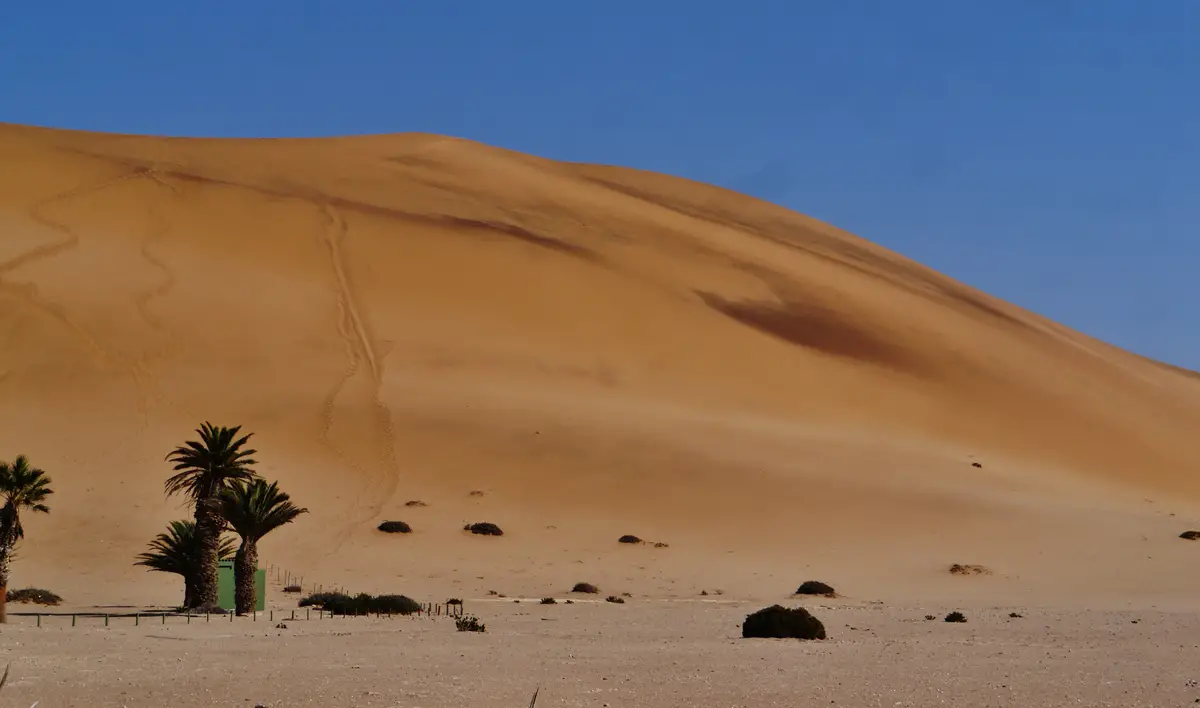
Hoba meteorite
Otjozondjupa
The largest known single-piece meteorite and the largest known natural piece of iron on Earth. The stone fell some 80,000 years ago, it weighs more than 60 tons, 2.7 by 2.7 m long.
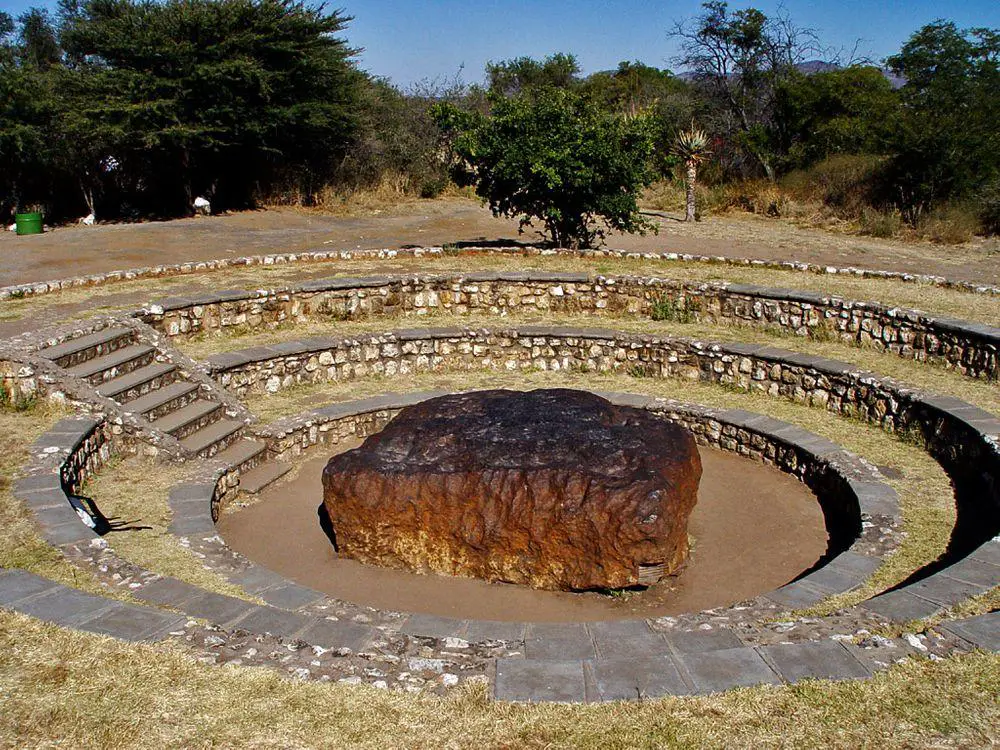
Ruacana Falls
Omusati
Unusual, very impressive waterfall. Kunene River here falls by 170 m over a fan-shaped, 700 m wide cliff. This sight opens only after heavy rains.
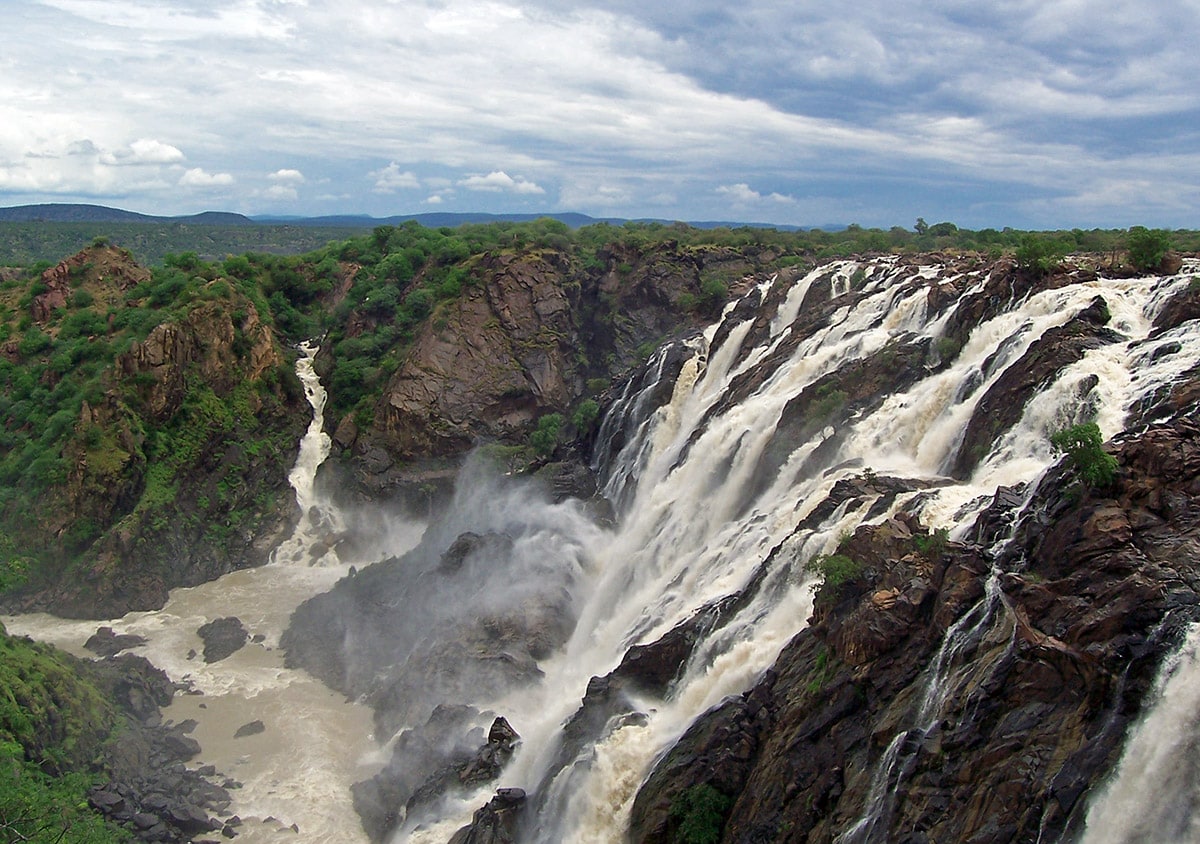
Dune 45
Hardap
Visually impressive, up to 170 m tall sand dune. One of the most photographed dunes in the world.
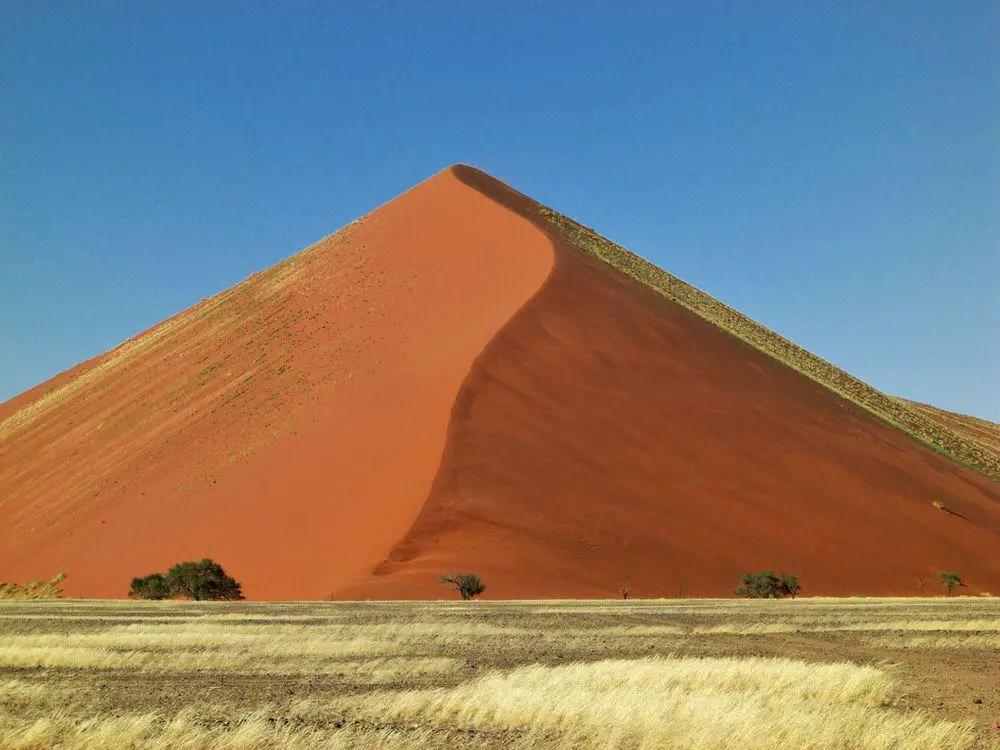
Epupa Falls
Kunene
Group of picturesque waterfalls in approximately 490 m wide front, formed by Kunene River. The tallest single drop is 37 m high. Picturesque groves of large baobabs next to the falls. Endemic species of fish.
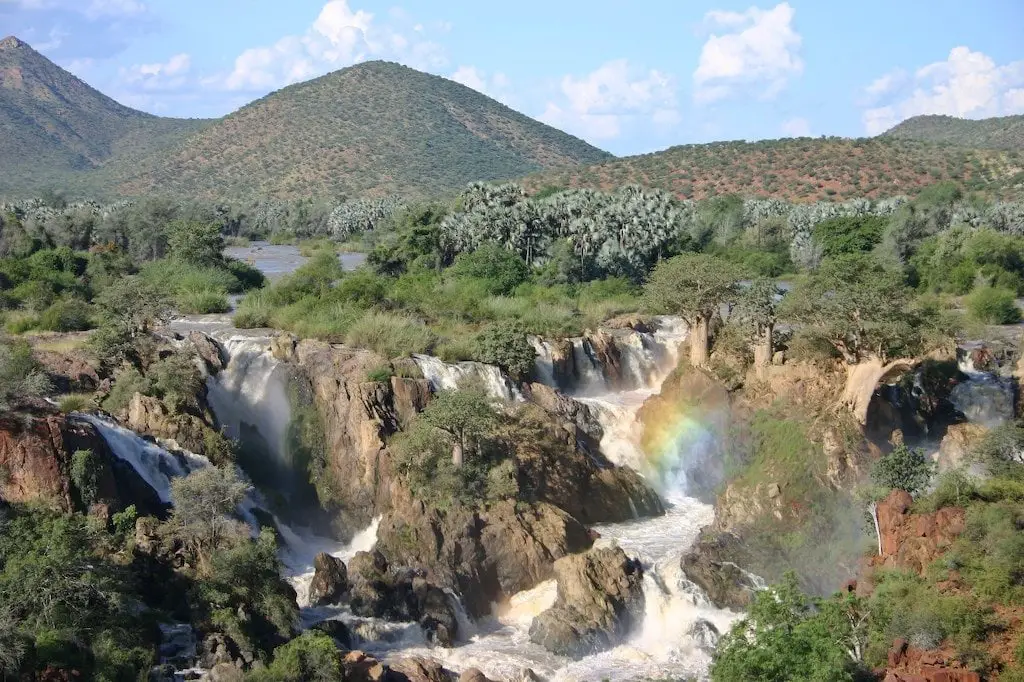
Otjikoto Lake
Oshikoto
Lake in a large sinkhole, at least 60 m deep. Lake water is polluted with chemical fertilizers and has poor visibility. Weapons of the retreating German army were thrown into the lake in 1914.
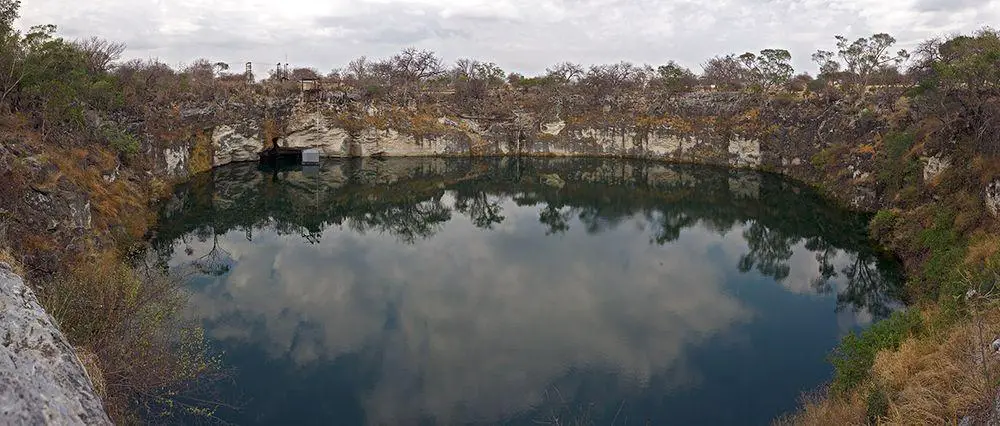
Giant crystals in Verloren
Khomas
Verloren quartz ridge is formed of giant quartz crystals that certainly reach 20 m in length but could be even 50 m long. In some places there are caves formed in sites where giant dolomite crystals have weathered away, leaving voids in even larger quartz crystals. Other minerals also have formed enormous crystals – tremolite needles are up to 20 m long, and calcite crystals: up to 1 m long.
Sesriem Canyon
Hardap
Approximately 1 km long, narrow canyon with up to 30 m tall walls. In some places canyon is just 1 – 2 m wide.
Big Daddy dune
Hardap
325 m (380 m?) tall sand dune.
Roter Kamm crater
Karas
Approximately 4 – 5 million years old impact crater. The diameter of the crater is 2.5 km, depth: 130 m. It was deeper earlier – the bottom is covered with a 100 m thick layer of sand.
Bogenfels
Karas
Large natural arch at the sea, 55 m tall.
Valley of the Organ Pipes
Kunene
Valley that is flanked with impressive, polygonal dolerite columns.
Pietersite mine
Erongo
The only active mine of gemstone – pietersite – in the world. This gem has a variegated color and a “cat’s eye” effect.
Biological wonders
Deadvlei
Hardap
Claypan, a visually stunning place with blackened, many centuries old trunks of dead acacia against orange sand dunes.
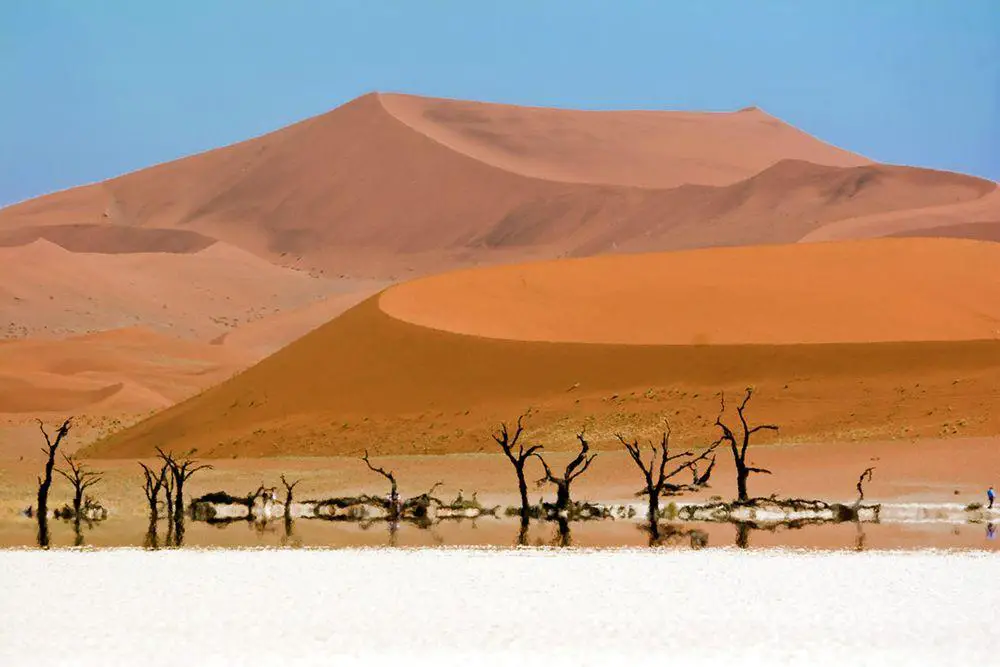
Quiver Tree Forest
Karas
One of the few existing Aloe dichotoma forests. Here grow some 250 of these unusual plants, the tallest ones are 200 – 300 years old.
Wlotzkasbaken lichen fields
Erongo
One of the largest lichen fields in the world, with numerous very rare and endemic species of lichen. Lichens can survive and grow due to the fog from the Atlantic.
Cape Cross lichen field
Erongo
One of the largest lichen fields in the world.
Ombalantu baobab tree
Omusati
Giant baobab, 28 m high, with a circumference of 26.5 m. The door leads into the tree and the room inside can accommodate 35 people. In the room today is located a local museum.
Welwitschia mirabilis in Messum Mountains
Erongo
The largest known example of this amazing desert plant. This 1.8 m tall plant could be up to 2,000 years old.
Fairy rings in Hartmann’s Valley and Fairy rings in Giribes Plains
Kunene
Largest of the mysterious fairy rings fields of the Namib desert. Slightly concave, round areas without any vegetation, around the rim of fairy rings a ring taller plants.
Archaeological wonders
The White Lady in Maack Shelter
Erongo
Some 2000 years old rock paintings show something that could be a ritual dance. One man has white painted legs and hands that once were considered as proof that white people have been here. Now it is considered that the painting shows a shaman with white-painted limbs.
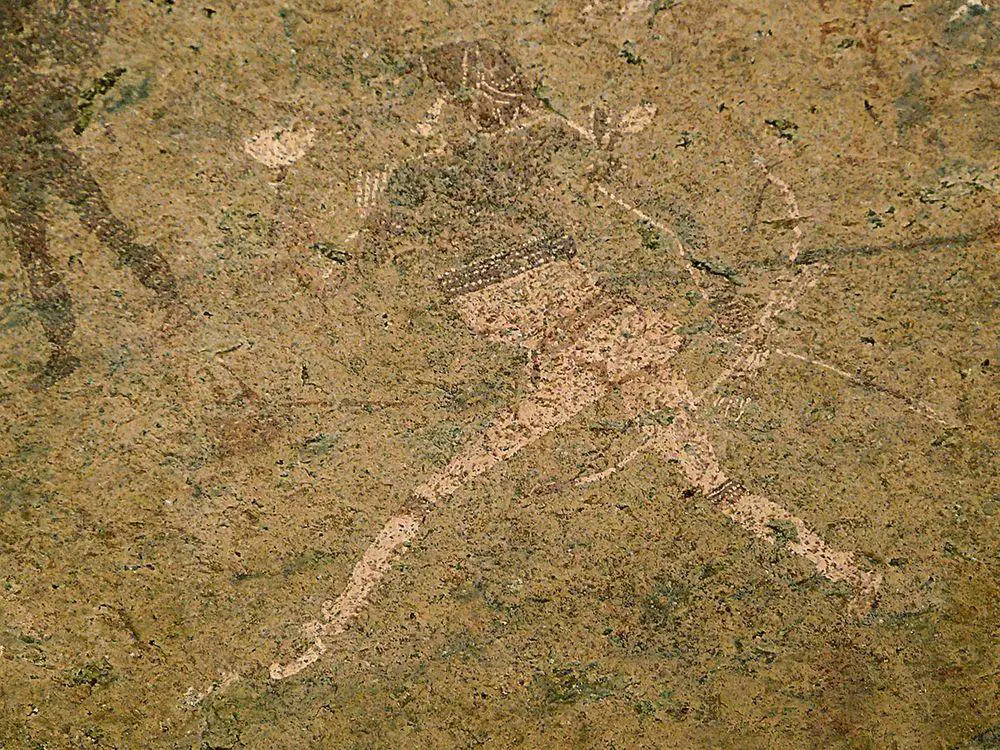
Architecture wonders
The historical center of Lüderitz
Karas
Collection of German colonial architecture, mainly in Art Noveau style, financed by a find of diamonds in 1909.
 Recommended books
Recommended books
This is Namibia
Namibia is a vast and mostly desolate country found on the west coast of southern Africa. Bisected by the Tropic of Capricorn, the country is bounded in the west by the icy Atlantic Ocean and in the east by the Kalahari Desert that stretches all the way into neighboring Botswana. Its remaining frontiers are drawn by rivers: the Kunene in the north, the Okavango in the northeast, and the Orange in the parched south.
Landscapes and Landforms of Namibia
The landscapes of Namibia are of world-class quality in beauty, diversity, and interest. This book provides the first-ever overview of the most important of these landscapes, explains why they look as they do, and evaluates why they are of note. Writing from a geomorphological perspective, the authors introduce the key processes and controls which influence landscape and landform development in Namibia.

